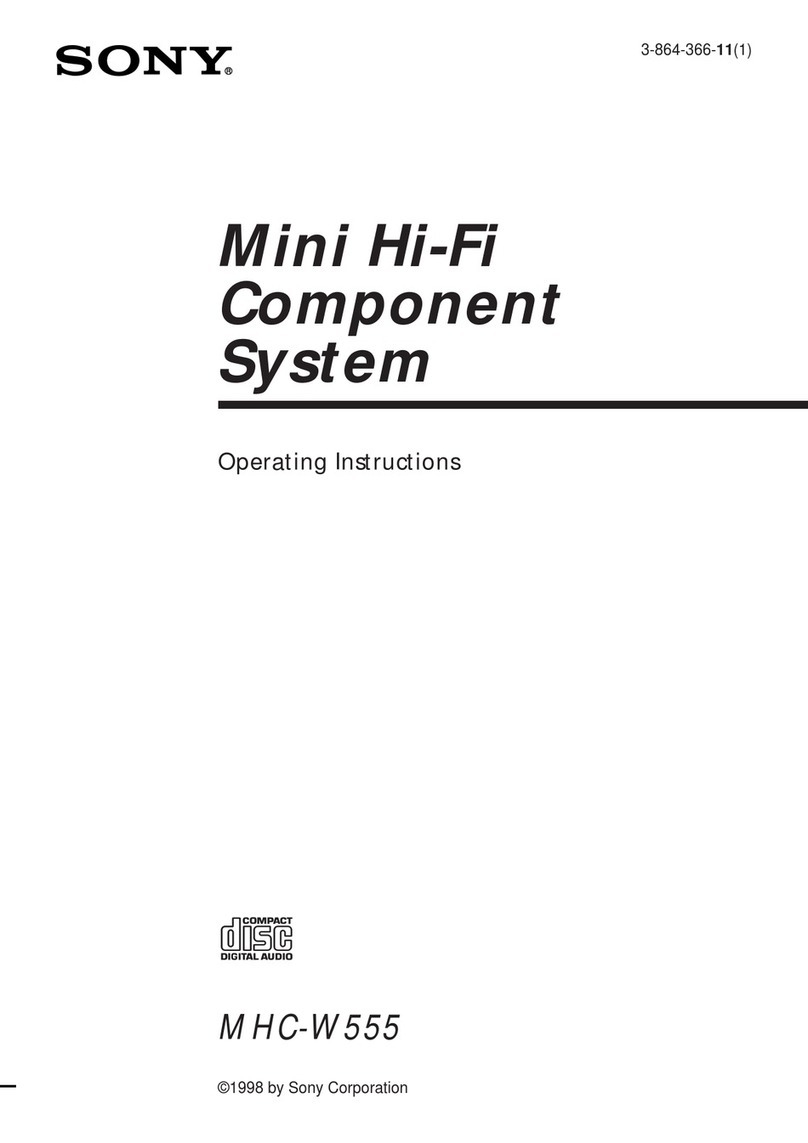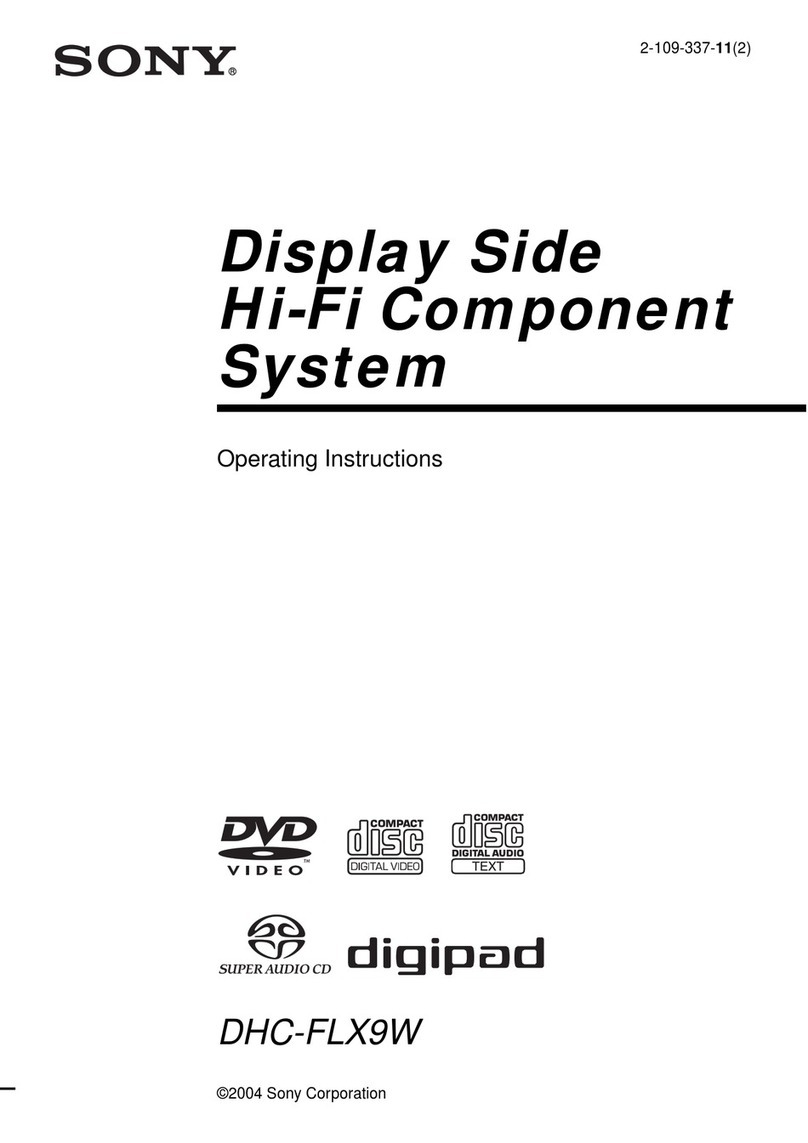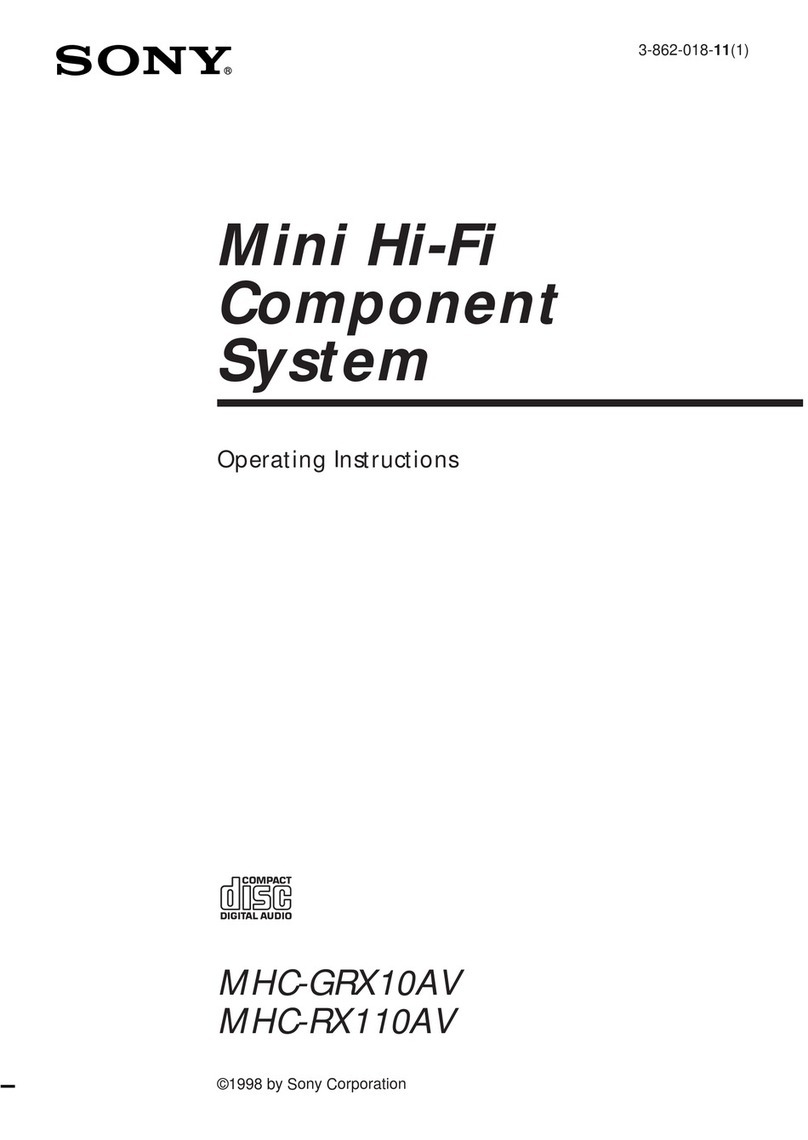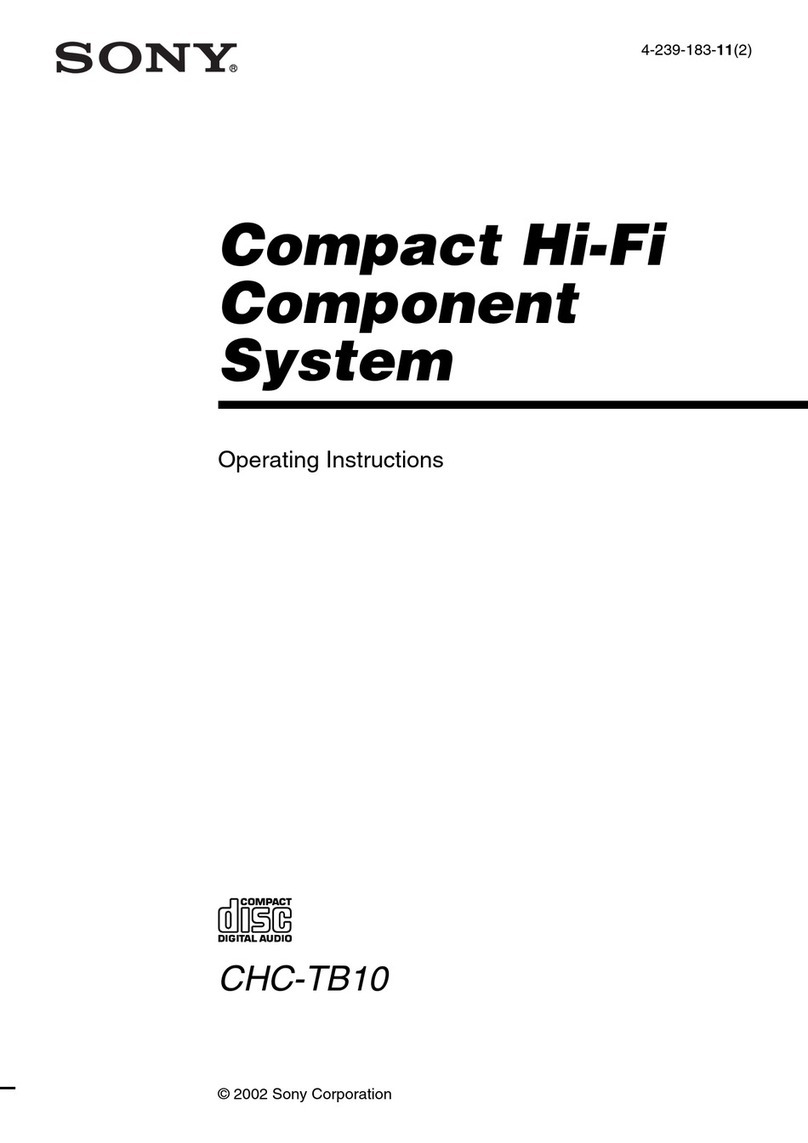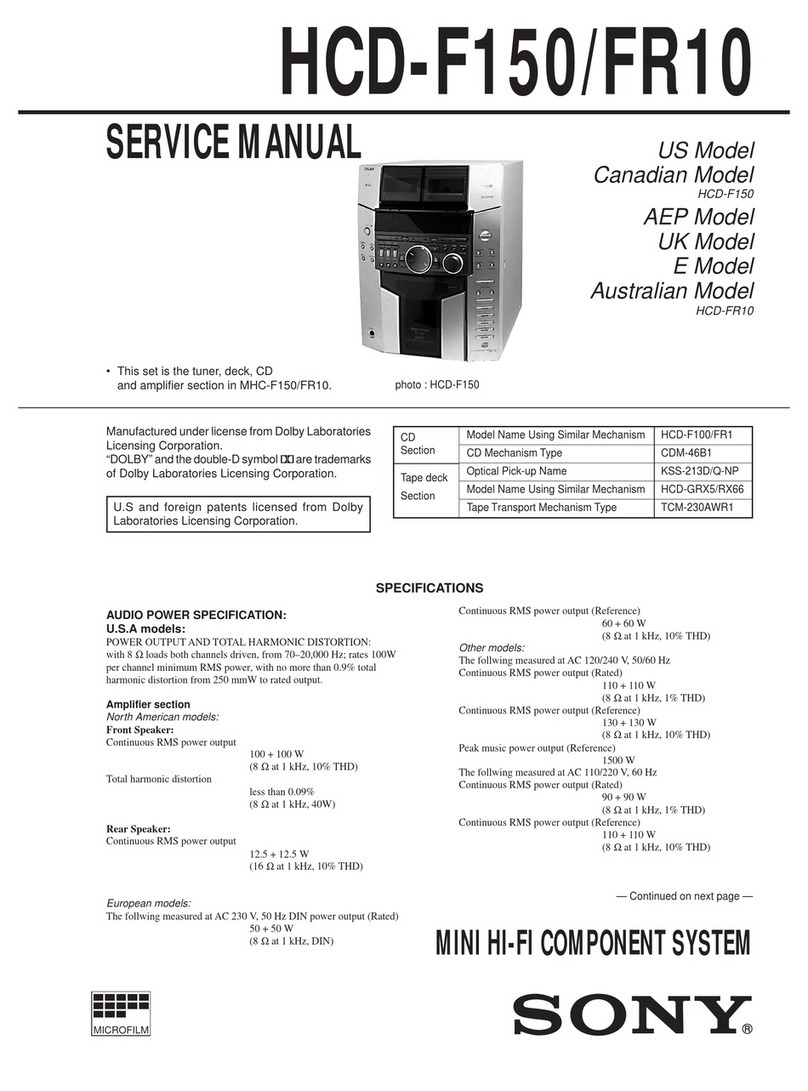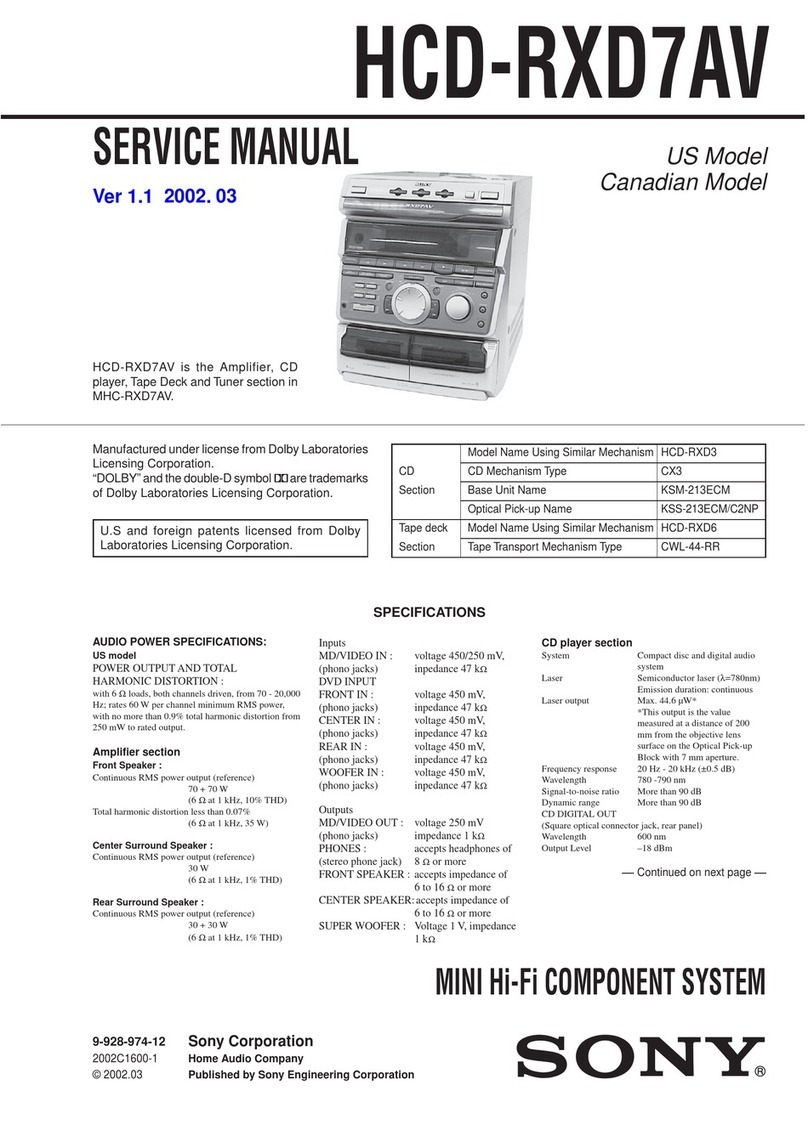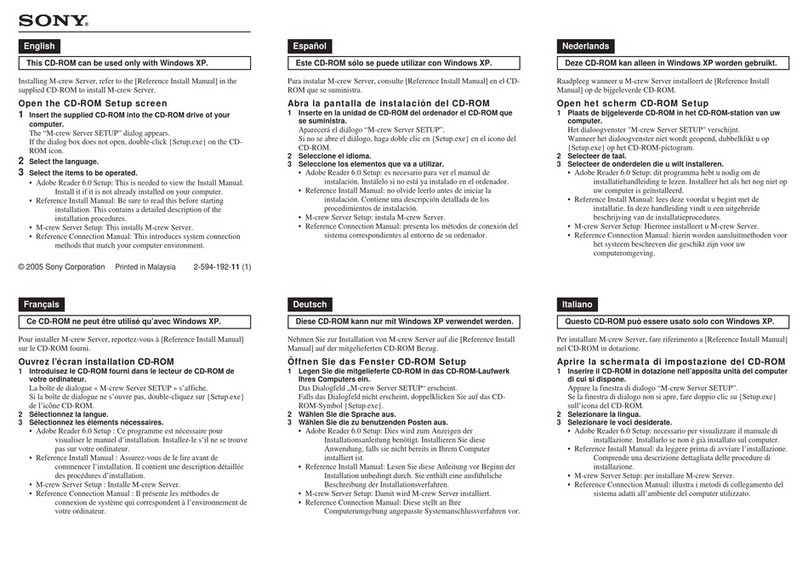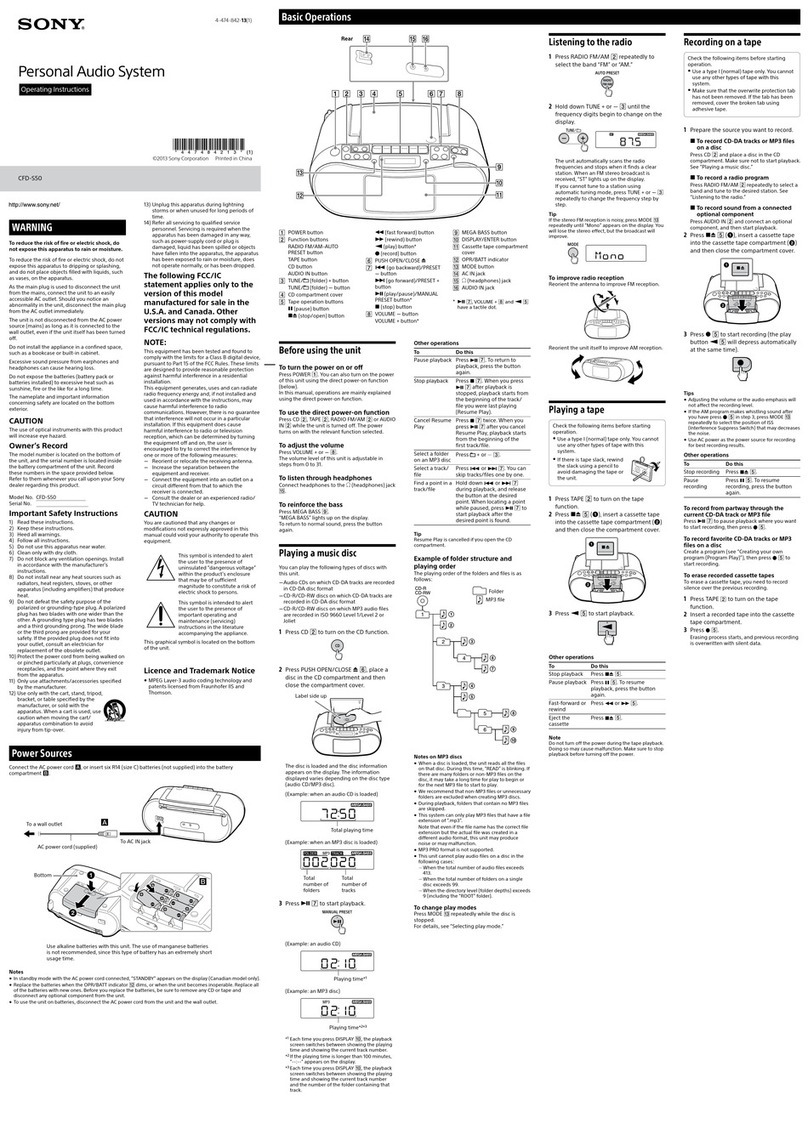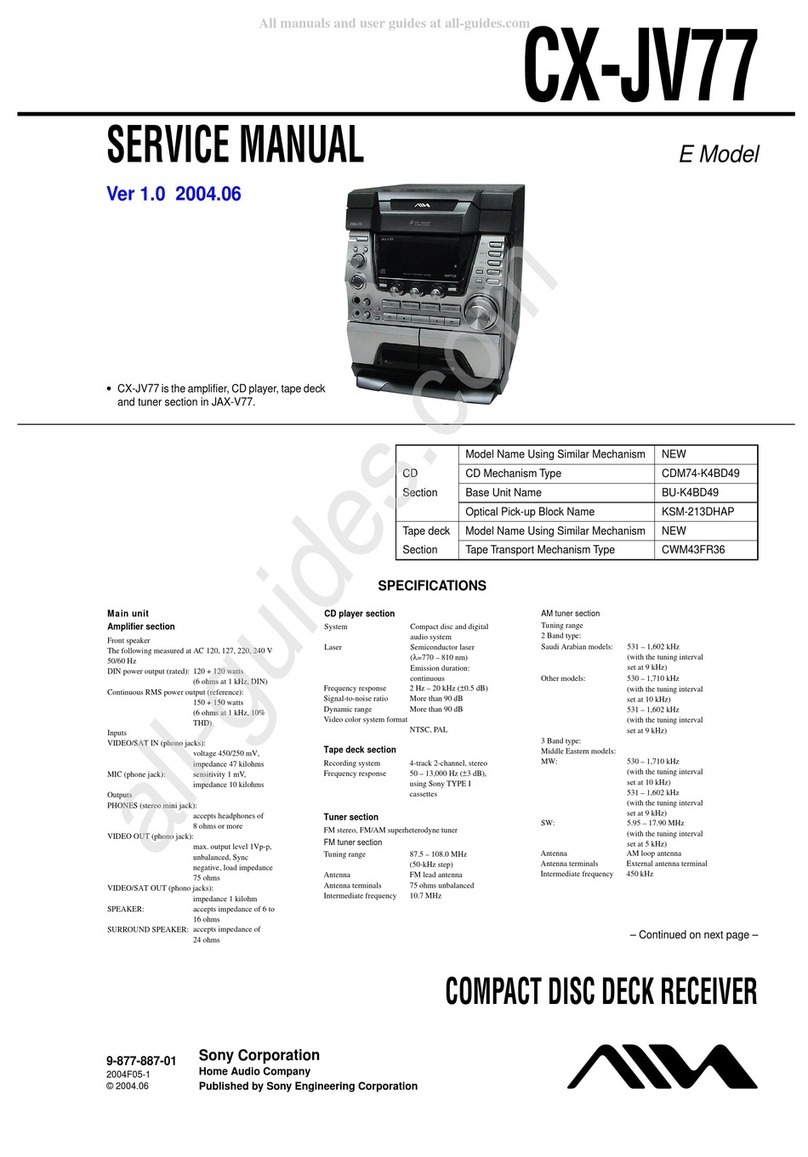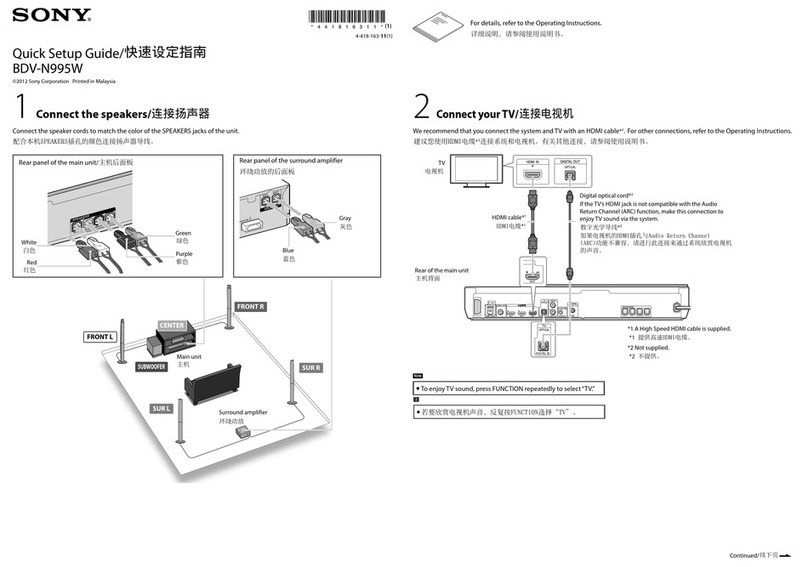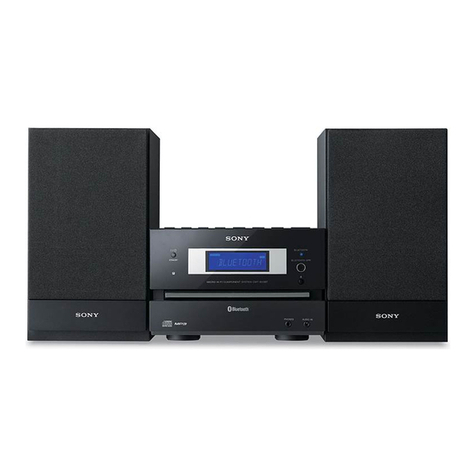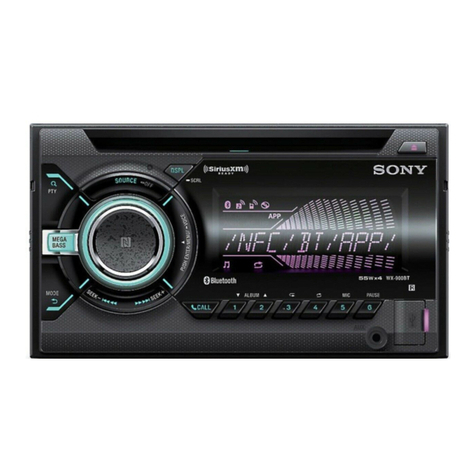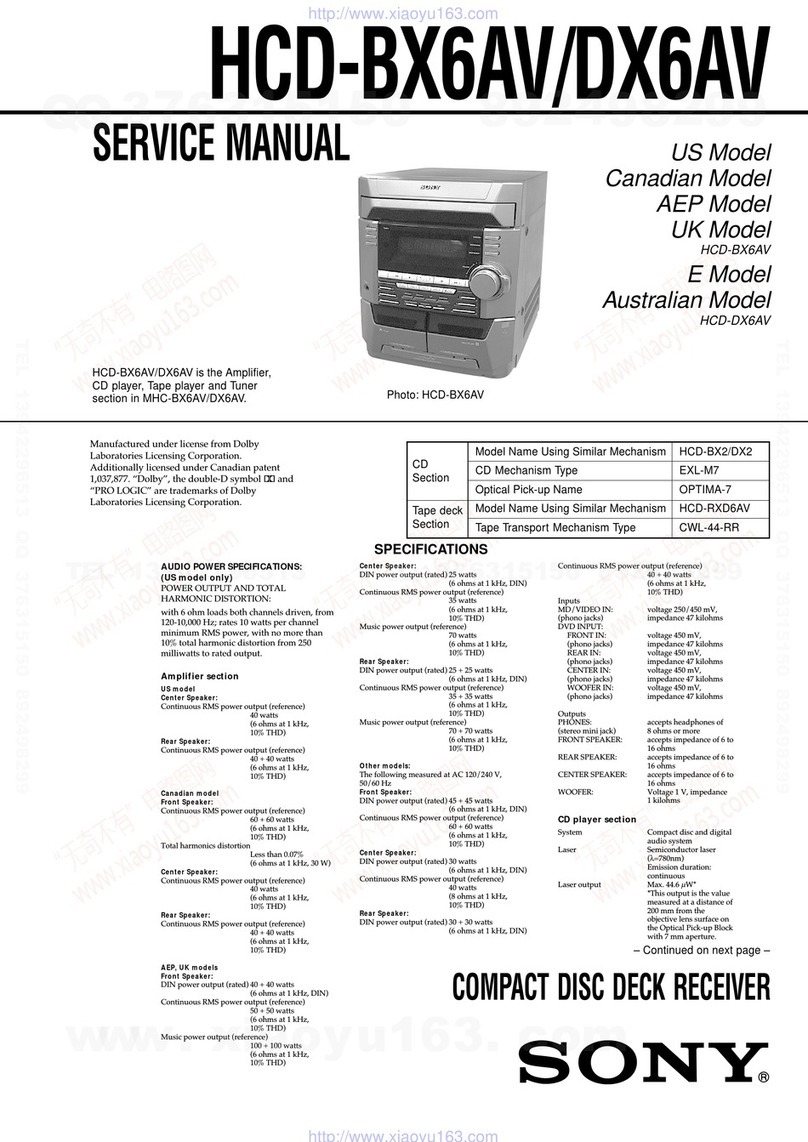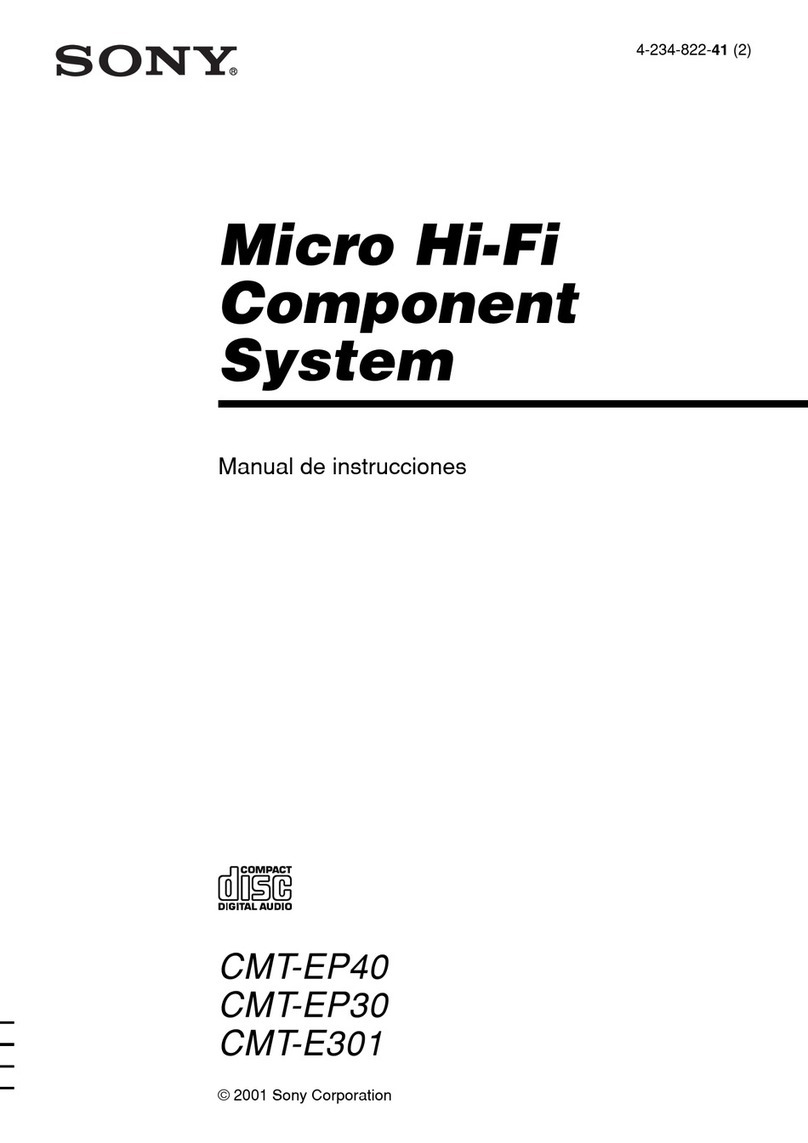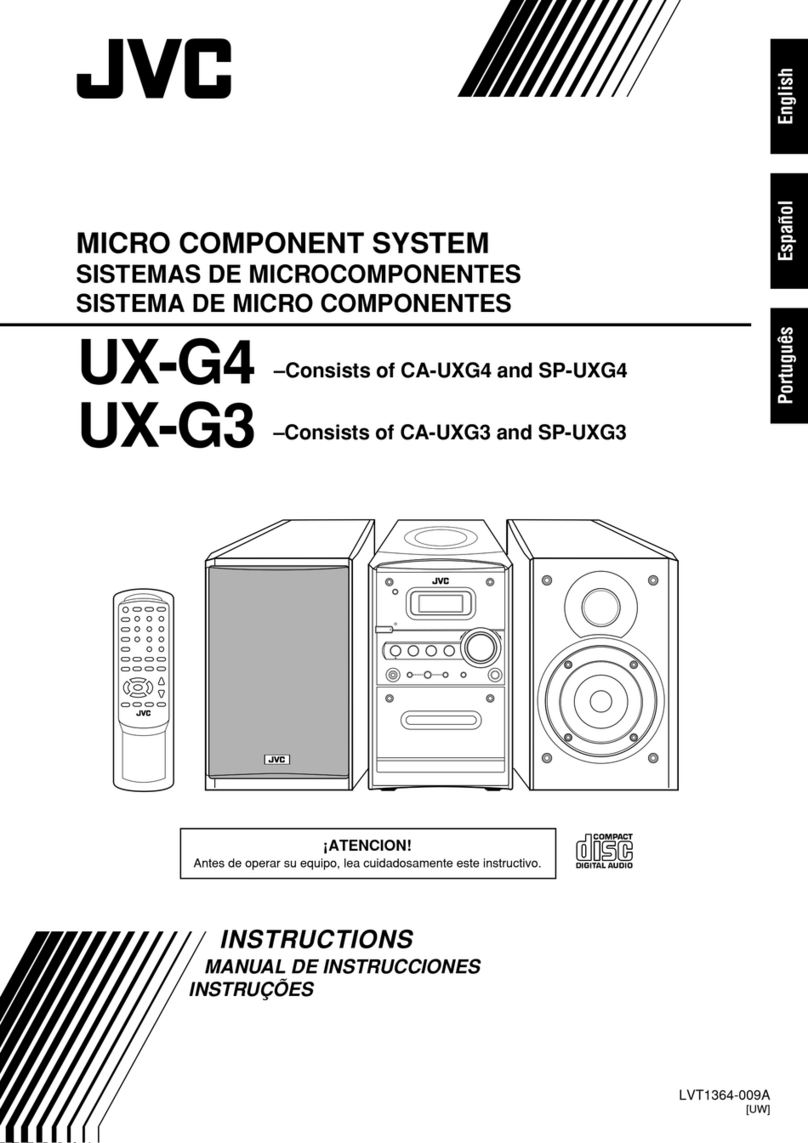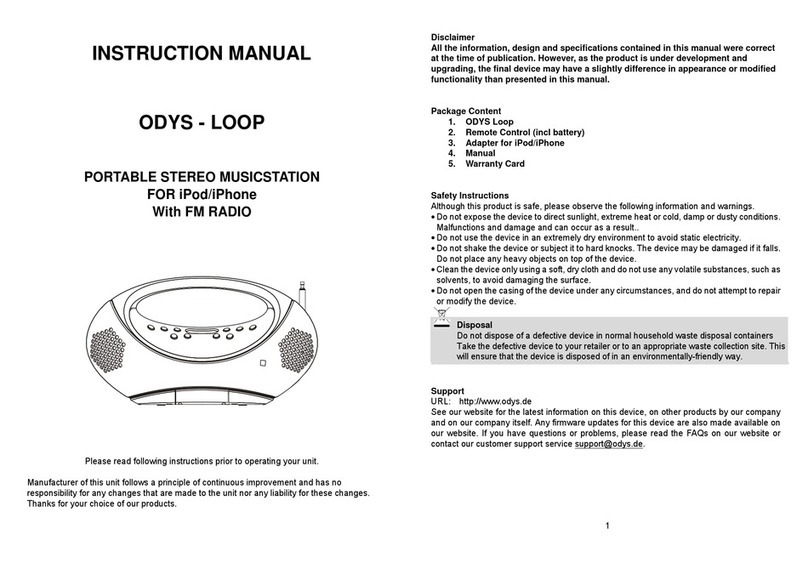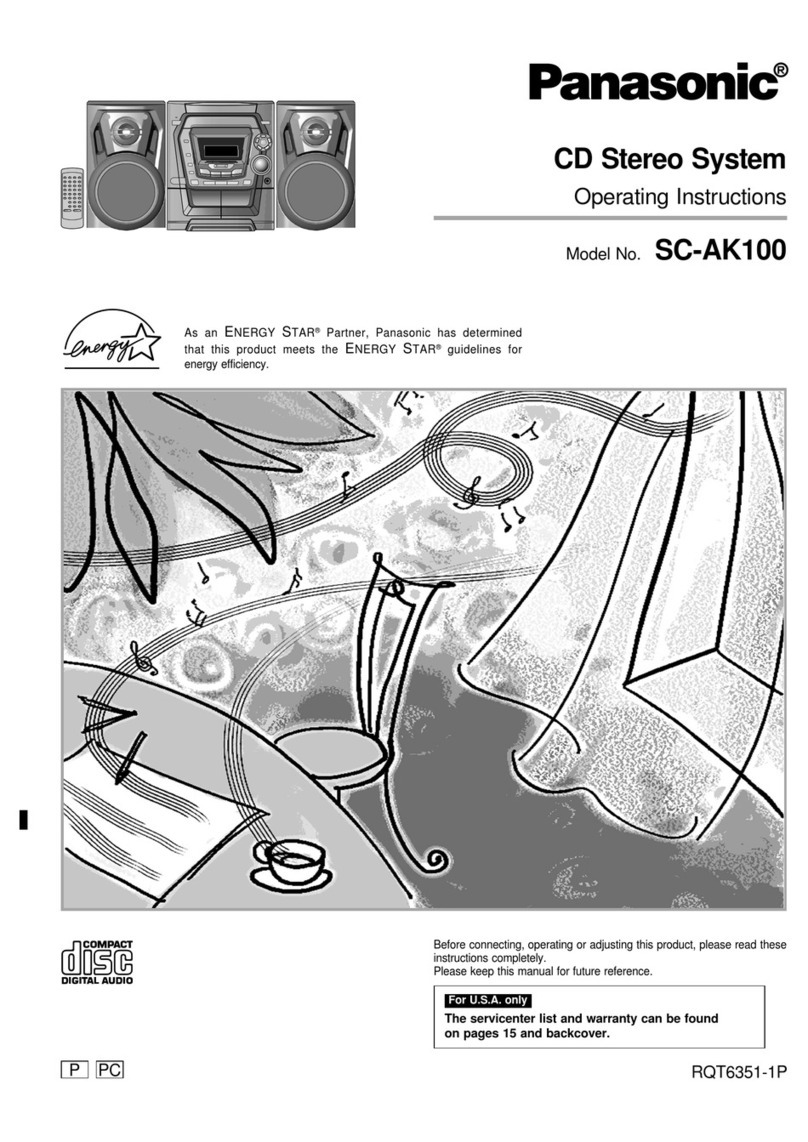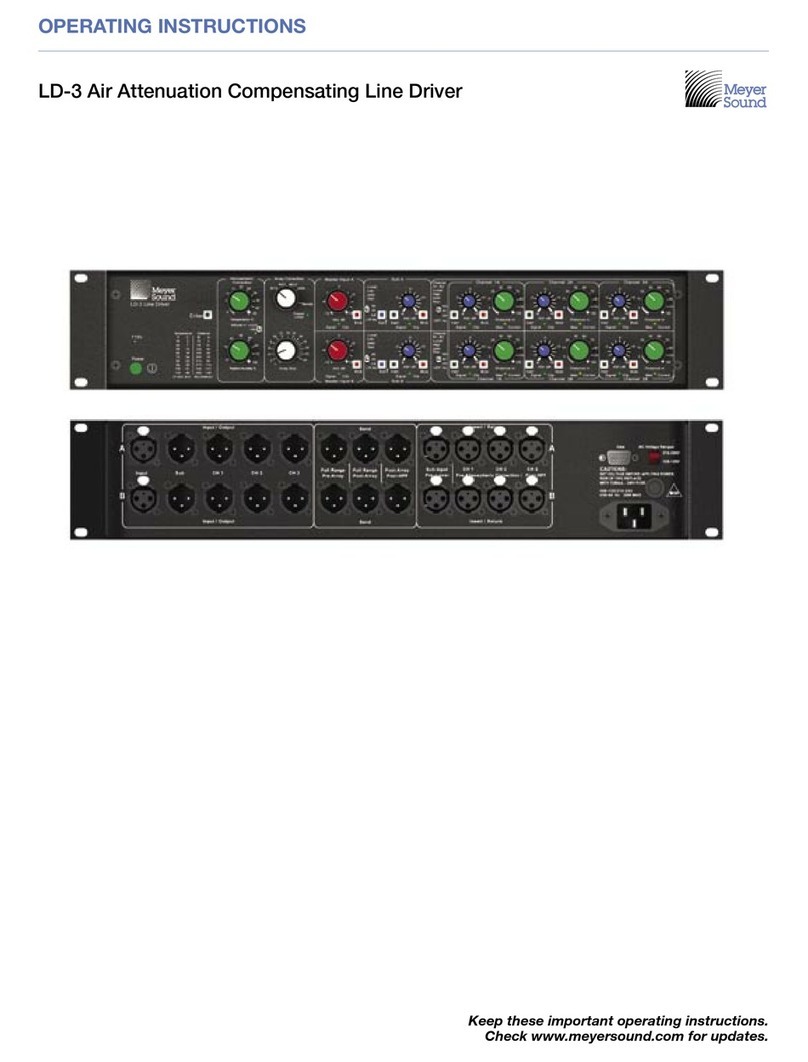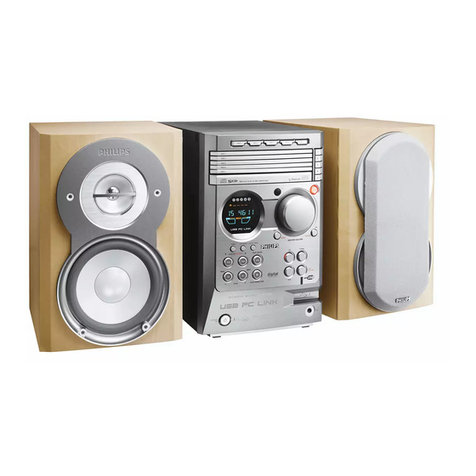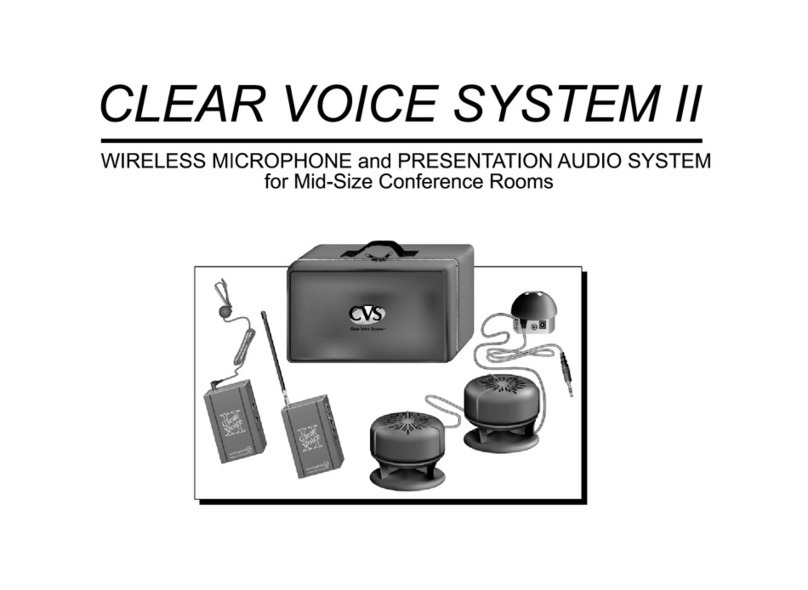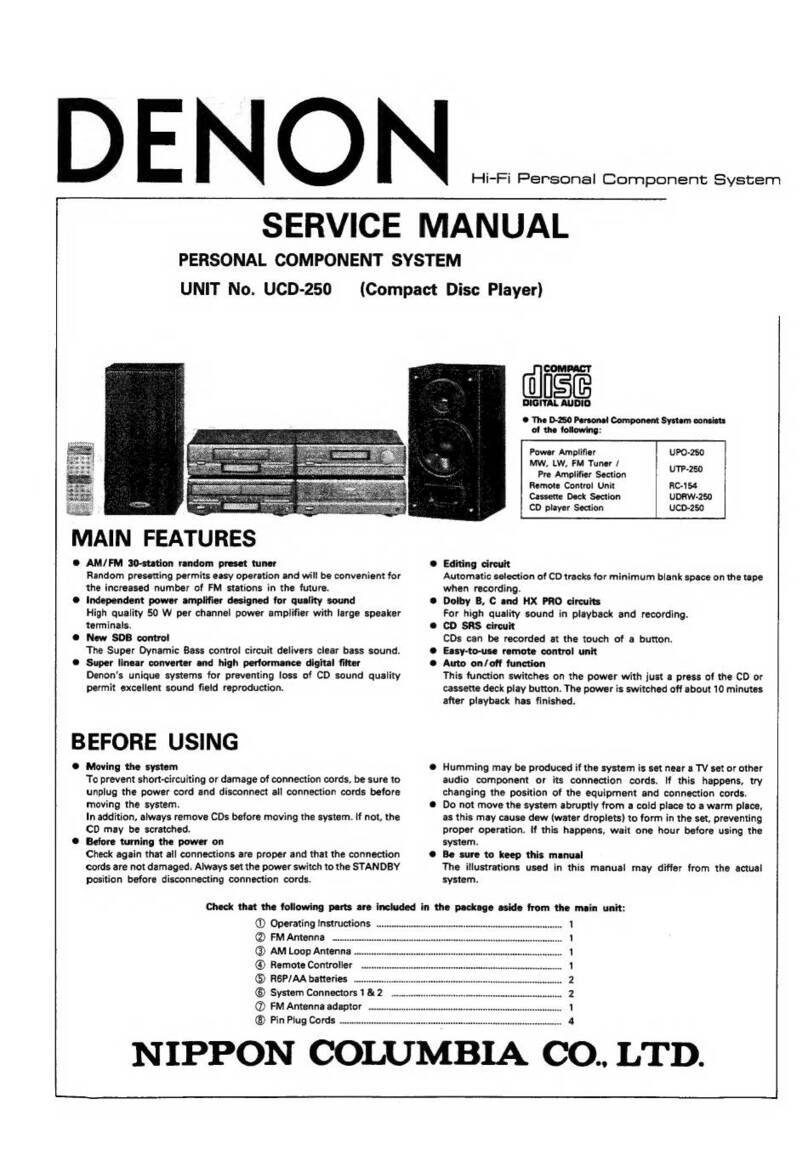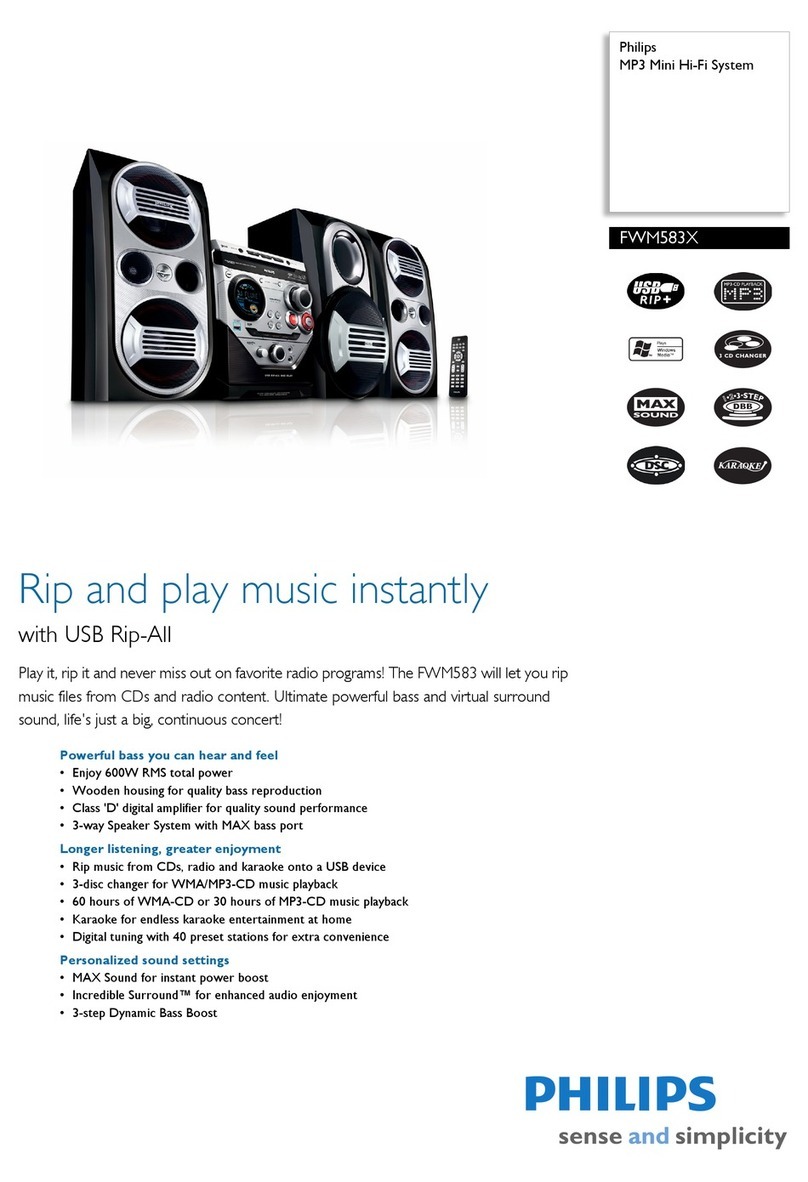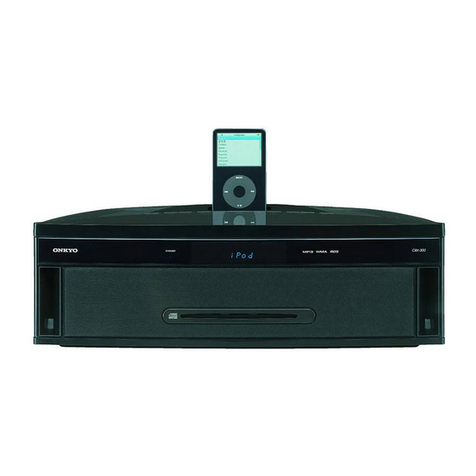2
Inputs
VIDEO (AUDIO) IN: voltage 250 mV,
(phono jacks) impedance 47 kilohms
MD IN: voltage 450 mV,
(phono jacks) impedance 47 kilohms
MIC: sensitivity 1 mV,
(mini jack) impedance 10 kilohms
(Asian model only)
Outputs
MD OUT: voltage 250 mV
(phono jacks) impedance 1 kilohms
VIDEO OUT: max. output level
(phono jack) 1Vp-p, unbalanced,
Sync negative, load impedance
75 ohms
S-VIDEO OUT: Y: 1Vp-p, unbalanced,
(4-pin/mini-DIN jack) Sync negative,
C: 0.286Vp-p,
load impedance 75 ohms
PHONES: accepts headphones of
(stereo mini jack) 8 ohms or more
FRONT SPEAKER: accepts impedance of 8 to 16 ohms
REAR SPEAKER: accepts impedance of 8 to 16 ohms
CENTER SPEAKER: accepts impedance of 8 to 16 ohms
WOOFER OUT: Voltage 1 V, impedance 1 kilohms
DVD player section
Laser Semiconductor laser
Frequency response DVD (PCM 48 kHz):
2 Hz –22 kHz = (±1 dB)
CD: 2Hz –20 kHz = (±1 dB)
Signal-to-noise ratio More than 90 dB
Dynamic range More than 90 dB
Video color system format NTSC, PAL
DIGITAL OUT OPTICAL
(Square optical connector jack, rear panel)
Wavelength 660 nm
Output Level –18 dBm
Tape playersection
Recording system 4-track 2-channel stereo
Frequency response 40 –13,000 Hz (±3 dB),
(DOLBY NR OFF) using Sony TYPE I cassette
40 –14,000 Hz (±3 dB),
using Sony TYPE II cassette
Tuner section
FM stereo, FM/AM superheterodyne tuner
FM tuner section
Tuning range
North American model: 87.5 –108.0 MHz (100 kHz step)
Other models: 87.5 –108.0 MHz (50 kHz step)
Antenna FM antenna
Antenna terminals 75 ohm unbalanced
Intermediate frequency 10.7 MHz
AM tunersection
Tuning range
North American model: 530 –1,710 kHz
(with the interval set at
10 kHz)
531 –1,710 kHz
(with the interval set at
9 kHz)
European and Middle Eastern models:
531 –1,602 kHz
(with the interval set at
9 kHz)
Other models: 531 –1,602 kHz
(with the interval set at
9 kHz)
530 –1,710 kHz
(with the interval set at
10 kHz)
Antenna AM loop antenna
Antenna terminals External antenna terminal
Intermediate frequency 450 kHz
Music power output (reference)
60 + 60 watts
(8 ohms at 1 kHz,
10% THD)
Othermodels:
The following measured at AC 120/220/240 V,
50/60 Hz
FrontSpeaker:
DIN power output (rated) 95 + 95 watts
(8 ohms at 1 kHz, DIN)
Continuous RMS power output (reference)
120 + 120 watts
(8 ohms at 1 kHz,
10% THD)
CenterSpeaker:
DIN power output (rated) 30 watts
(8 ohms at 1 kHz, DIN)
Continuous RMS power output (reference)
40 watts
(8 ohms at 1 kHz,
10% THD)
Rear Speaker:
DIN power output (rated) 30 + 30 watts
(8 ohms at 1 kHz, DIN)
Continuous RMS power output (reference)
40 + 40 watts
(8 ohms at 1 kHz,
10% THD)
General
Power requirements
North American model: 120 V AC, 60 Hz
European model: 230 V AC, 50/60 Hz
Australian model: 230 –240 V AC, 50/60 Hz
Mexican model: 120 V AC, 60 Hz
Thai and Chinese models: 220 V AC, 50/60 Hz
Other models: 120 V, 220 V or
230 –240 V AC, 50/60 Hz
Adjustable with voltage selector
Power consumption
North American model: 220 watts
European model: 220 watts
Other models: 230 watts
Dimensions (w/h/d) Approx. 250 x 375 x 395 mm
Mass
North American model: Approx. 13.2 kg
European model: Approx. 13.0 kg
Other models: Approx. 13.5 kg
Design and specifications are subject to change
without notice.
Rear Speaker:
DIN power output (rated) 30 + 30 watts
(8 ohms at 1 kHz, DIN)
Continuous RMS power output (reference)
40 + 40 watts
(8 ohms at 1 kHz,
10% THD)
